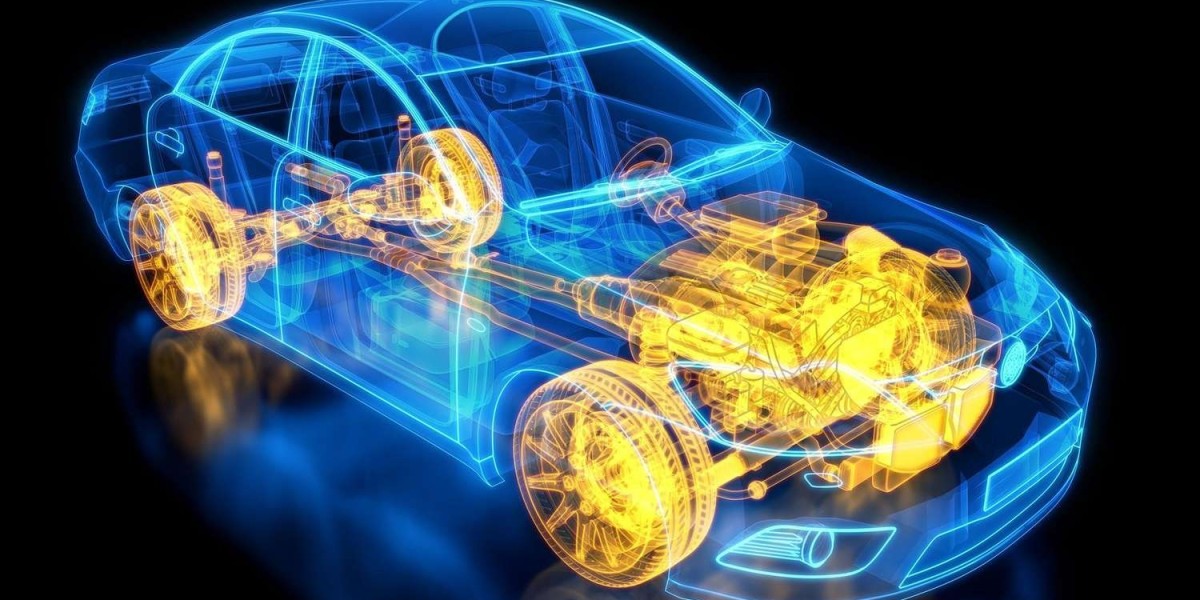Drive by wire or DBW refers to the replacement of conventional mechanical control systems with electronic control systems using electromechanical actuators and human-machine interfaces such as steering wheels, pedals, and switches. Using electronics, signals are transmitted electronically and electronically actuated motors and actuators replace the directly-coupled mechanical linkages and cables used for conventional throttle, brake and steering control systems. Drive-by-wire technology allows for improved vehicle control, increased safety, reduced weight, and additional features like brake-by-wire and steer-by-wire.
Benefits of Drive by Wire Technology
Some of the key benefits of drive-by-wire technology include:
Improved vehicle control: By using electronic control instead of mechanical linkages, drive-by-wire systems provide more precise control of vehicle systems like throttle, brakes and steering. This results in better vehicle stability and handling. Electronic control improves engine/brake/transmission response time and control.
Increased safety: Drive by Wire allows for numerous active safety features that improve safety. Features like electronic stability control, anti-lock braking, traction control and brake assist use electronic control for safety. Reduced risk of component failures via redundancy and self-diagnosis. Drive-by-wire also prevents throttle or brake failure during accidents.
Reduced weight: Removing heavy mechanical components like throttle cables, brake lines and hydraulic pumps reduces overall vehicle weight. A lighter vehicle improves performance and fuel-efficiency. Weight savings from drive-by-wire is around 10-15 kgs depending on the vehicle size.
Additional features: Beyond basic throttle, brake and steering control, drive-by-wire enables innovative active safety, driver assistance and autonomous driving features. It allows for variable effort steering, remote parking, steer-by-wire and brake-by-wire systems.
Customizable driving behaviors: Electronic control allows easy customization of throttle, brake and steering responses based on driver selected modes. Aggressive or relaxed driving modes custom tuned for different driver preferences and needs.
Cost savings: While the initial development costs of DBW systems are higher, life cycle costs are lower due to reduced part counts, simplified assembly and maintenance savings over the longer term.
Types of Drive by Wire Systems
The main types of drive-by-wire systems currently used in road going production vehicles include:
Throttle-by-wire: Replaces the direct mechanical linkage between the accelerator pedal and engine throttle with an electric signal. Allows for faster responses, cruise control and automatic transmission control.
Brake-by-wire: Similar to throttle-by-wire but for the brake system. Removes the mechanical linkage between the brake pedal and brake actuators. Enables sophisticated safety features like electronic stability control, anti-lock brakes and brake assist.
Steer-by-wire: A future oriented system that removes the direct mechanical connection between steering wheel and road wheels. Makes parallel steering, rear-wheel steering and self-driving functionality possible. Still in development and testing stages.
Shift-by-wire: Allows electronic control of gear shifts in automatic or automated manual transmissions without mechanical linkage to gear selector. Facilitates technologies like auto-blip downshifts.
Drive-by-wire in Current Vehicle Models
Many leading automakers have now adopted drive-by-wire technologies for their mass production vehicles. Some notable examples are:
-Throttle-by-wire has been implemented by Toyota, Honda, Ford and GM across their lineups since the early 2000s.
-Brake-by-wire is used on systems like Bosch ESP 8.0 electronic stability control fitted as standard on most modern vehicles.
-Some luxury vehicles offer variable effort steering which is enabled by drive-by-wire control of steering feedback.
-High-end performance cars from Ferrari, Lamborghini and McLaren use shift-by-wire automatic transmissions.
-Concept vehicles from companies like BMW, Tesla and Mercedes have demonstrated prototype steer-by-wire systems.
-Autonomous vehicle developers like Waymo, Cruise and Argo AI depend extensively on drive-by-wire for self-driving capabilities.
Benefits of Drive by Wire have resulted in its widespread adoption across different vehicle segments. Mass vehicles now offer drive-by-wire safety features as standard while performance and luxury vehicles exploit additional functionality it enables. Overall drive-by-wire has become an important underlying automotive technology today.
Future Applications of Drive by Wire
While drive-by-wire is now mainstream, continuous advancements will further improve its capabilities. Some potential future applications include:
- Fully autonomous vehicles without steering wheels, pedals or human inputs requiring advanced steer, throttle and brake-by-wire.
- Platooning of commercial vehicles using cooperative adaptive cruise control facilitated by drive-by-wire.
- Personal air vehicles or flying cars using fly-by-wire fly-by-light systems for autonomous navigation and control.
- Advanced haptics and force-feedback methods for refined human-machine interfaces in driverless vehicles.
- Redundant or backup drive-by-wire systems for critical functions ensuring safety in case of primary system failures.
- More customizable and on-demand driving modes adjusting vehicle dynamics for optimal rider comfort.
- Standardized and scalable drive-by-wire platforms enabling flexible vehicle architectures and automated mobility-as-a-service operations.
As computing and electrification trends accelerate, drive-by-wire opens up possibilities that were not feasible with mechanical control alone. It will play a pivotal role in shaping the future of both autonomous and recreational ground, air and sea vehicles. Continuous innovation will reinforce its central importance across diverse transportation domains.
Get More Insights: Drive By Wire
For More Insights Discover the Report In language that Resonates with you
· French
· German
· Italian
· Russian
· Japanese
· Chinese
· Korean
About Author:
Alice Mutum is a seasoned senior content editor at Coherent Market Insights, leveraging extensive expertise gained from her previous role as a content writer. With seven years in content development, Alice masterfully employs SEO best practices and cutting-edge digital marketing strategies to craft high-ranking, impactful content. As an editor, she meticulously ensures flawless grammar and punctuation, precise data accuracy, and perfect alignment with audience needs in every research report. Alice's dedication to excellence and her strategic approach to content make her an invaluable asset in the world of market insights.
(LinkedIn: www.linkedin.com/in/alice-mutum-3b247b137 )










